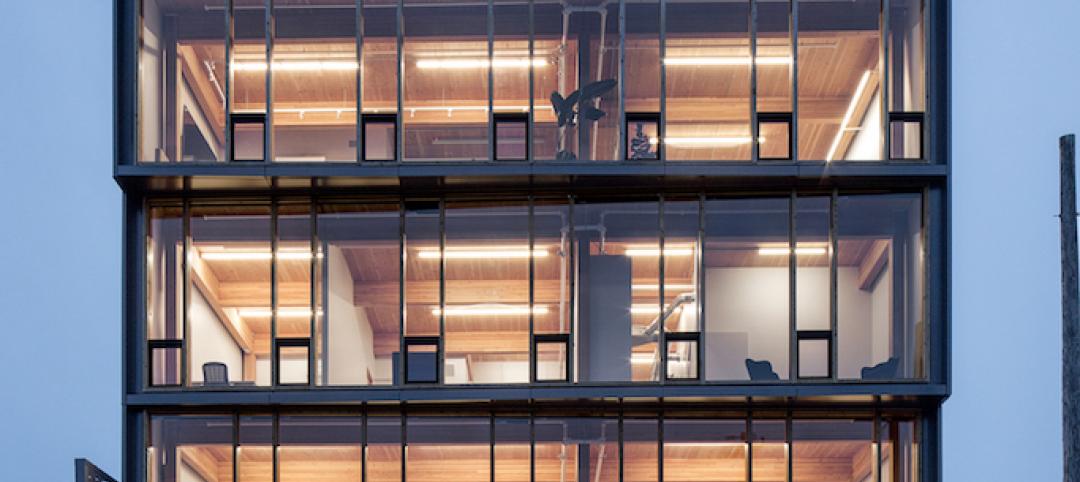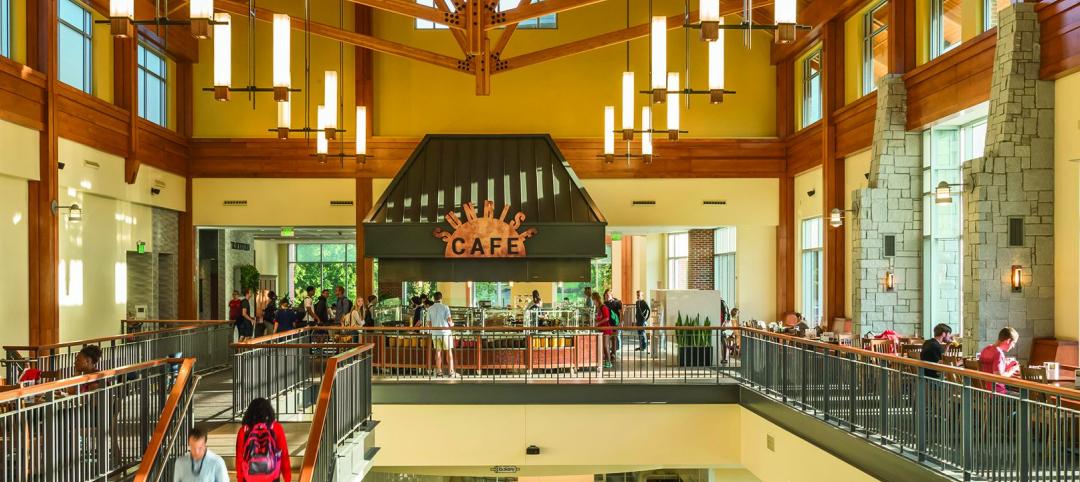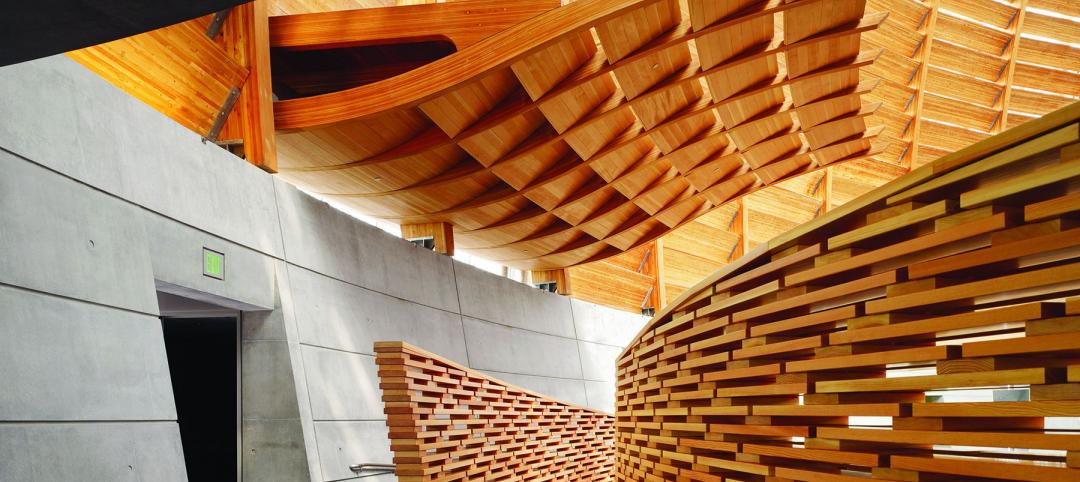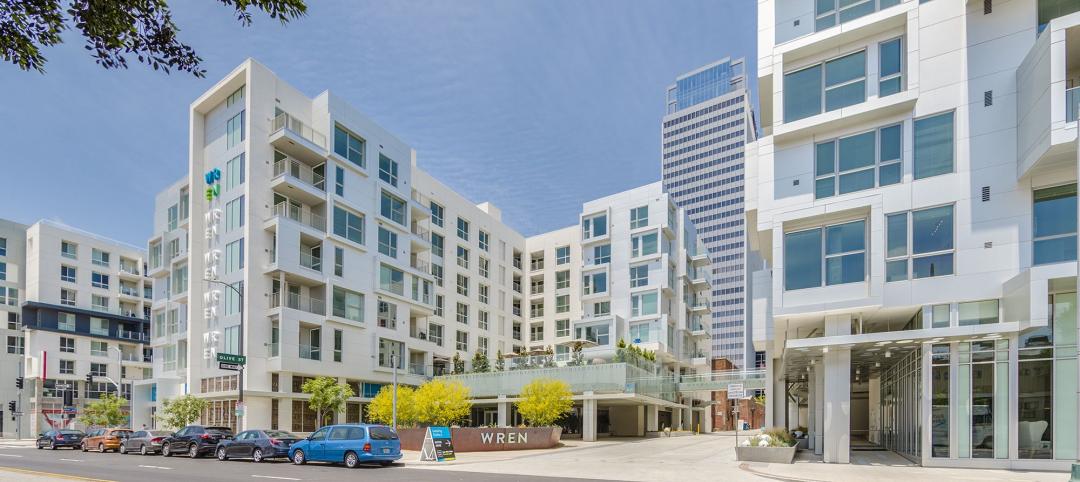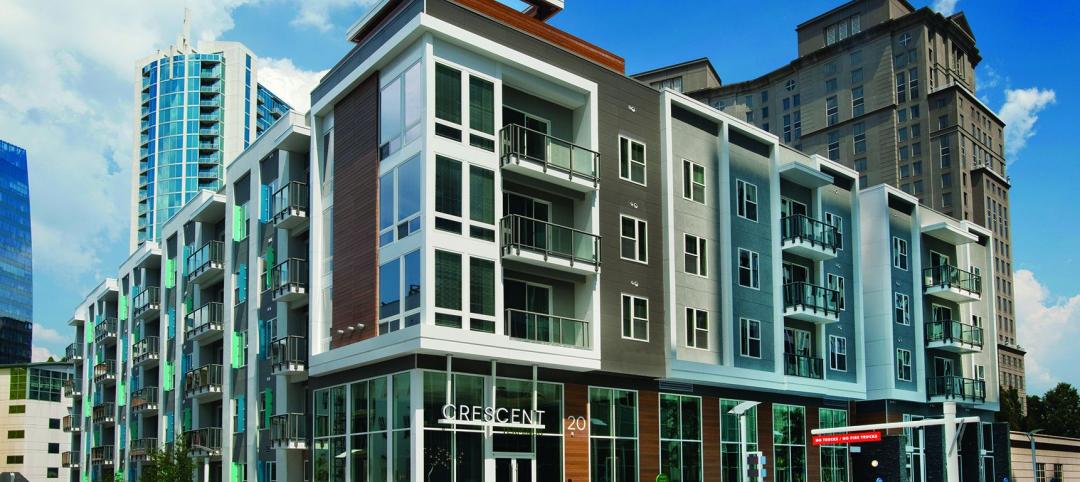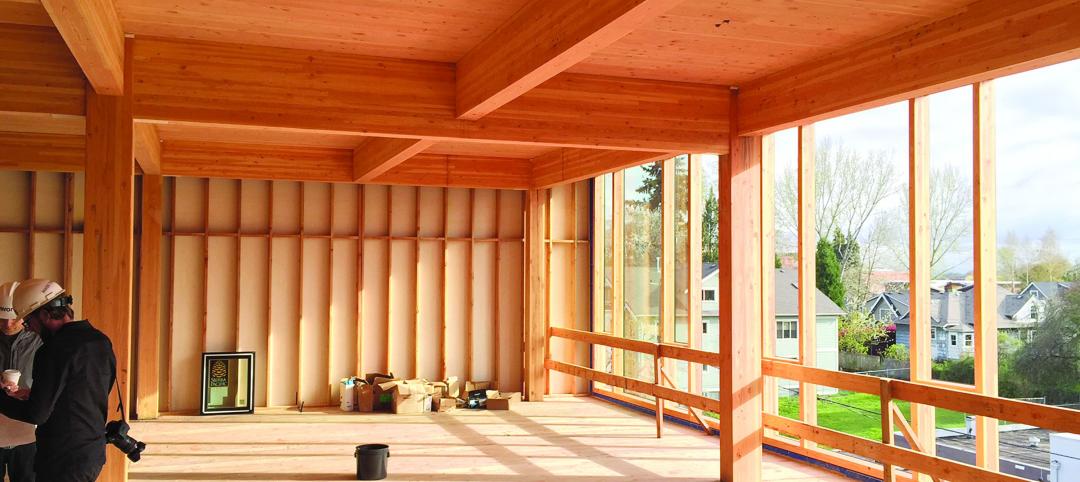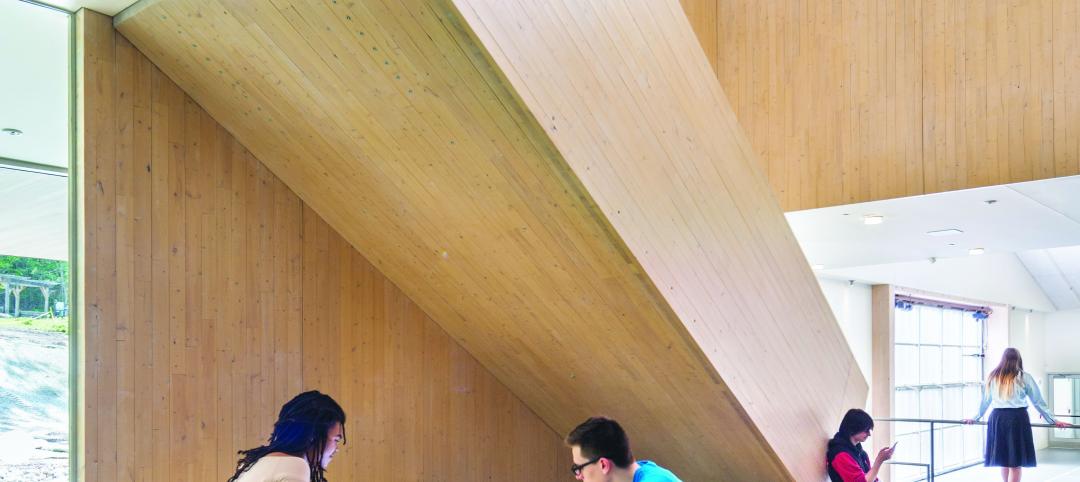Opportunities for Wood in Low-Rise Commercial Buildings

When designing restaurants, stores, and low-rise offices, certain features come to mind as typical. These buildings tend to have large openings that allow plenty of daylight. Many have high ceilings and (by extension) tall walls, open floor plans, and the ability to reconfigure the interior as tenant needs change. They often include irregular shapes, such as architectural features that make a chain restaurant instantly recognizable in a row of strip mall stores. Many also have flat roofs and parapets that hide rooftop mechanical units.
What doesn’t always come to mind is the fact that wood construction has the flexibility to meet all of these needs; that wood can achieve the structural performance and quality objectives of even a large ‘big box’ store, cost-effectively, while providing a host of other advantages.
This course is intended for building designers who want to learn more about the use of wood framing systems in low-rise commercial projects. For many, the motivation will be cost. As this course illustrates, wood structures can cost significantly less than comparable buildings made from other materials. Others are attracted to the idea of wood’s versatility, ease of use, and adaptability, while others still appreciate its renewability, sustainability, and light carbon footprint. Depending on the application, aesthetics and the growing body of research supporting wood’s biophilic qualities—i.e., the positive impact that exposed wood can have on a building’s occupants—may be the biggest driver for its use.
Intended to provide practical information that can be applied to projects, the course begins with code-related topics, including cost implications of construction type, opportunities for achieving unlimited area, and implications of multi-tenant occupancies. It provides an overview of wood wall and roof systems commonly used in commercial buildings, and highlights key design considerations. Examples of wood-frame buildings are highlighted, and a recent cost and environmental comparison of a big box store designed in wood versus steel is summarized. Code references refer to the 2015 International Building Code (IBC) unless otherwise noted.
Learning Objectives:
- Explain how wood-frame systems can be used to achieve design objectives commonly associated with commercial structures, such as tall walls, flat roofs, parapets, and open-front floor plans.
- Identify cost savings associated with Construction Types III and V compared to Types I and II, per the International Code Council’s Building Valuation Data.
- Discuss opportunities for achieving unlimited area for wood-frame commercial buildings under the International Building Code and implications of multi-tenant occupancies.
- Review applications of wood-frame construction in low-rise commercial buildings, with an emphasis on restaurant, retail, and office occupancies.
More Campus Related Content
Building Materials and Equipment
Wood and Evolving Codes: The 2018 IBC and Emerging Wood Technologies
Increasingly, designers, builders, and building owners are turning to one of our oldest building materials: wood. Valued for its versatility, low…
 course credit: 1.5 AIA LU/HSW
course credit: 1.5 AIA LU/HSW
Provided By: Think Wood
Building Materials and Equipment
Wood and Indoor Environment
The objectives of sustainable design are broader than just environmental effects, having come to embrace issues of human health and performance. Many…
 course credit: 1.0 AIA LU/HSW
course credit: 1.0 AIA LU/HSW
Provided By: Think Wood
Building Materials and Equipment
Thinking Wood as a Material of Choice
Designers today are finding new possibilities in one of the oldest building materials on earth. Wood has always been valued for its beauty, abundance…
 course credit: 1.0 AIA LU/HSW
course credit: 1.0 AIA LU/HSW
Provided By: Think Wood
Building Materials and Equipment
Multifamily, Mid-Rise Buildings Using Wood Construction
Multifamily housing is an active part of design and construction activity across the U.S. Steel, concrete and masonry typically come to mind as…
 course credit: 1.0 AIA LU/HSW
course credit: 1.0 AIA LU/HSW
Provided By: Think Wood
Building Materials and Equipment
Mid-Rise Wood Construction
Cost-effective, code-compliant and sustainable, mid-rise wood construction is gaining the attention of design professionals nationwide, who see it as…
 course credit: 1.0 AIA LU/HSW
course credit: 1.0 AIA LU/HSW
Provided By: Think Wood
Building Materials and Equipment
Mass Timber in North America
This course is intended for architects and engineers seeking current information on mass timber, including products, research related to structural…
 course credit: 1.5 AIA LU/HSW
course credit: 1.5 AIA LU/HSW
Provided By: Think Wood
Building Materials and Equipment
The Impact of Wood Use on North American Forests
As green building has evolved beyond its initial emphasis on energy efficiency, greater attention has been given to the choice of structural…
 course credit: 1.0 AIA LU/HSW
course credit: 1.0 AIA LU/HSW
Provided By: Think Wood
Building Materials and Equipment
Designing Modern Wood Schools
This course takes a practical look at the design of wood schools, emphasizing opportunities with traditional wood-frame construction and, in…
 course credit: 1.5 AIA LU/HSW
course credit: 1.5 AIA LU/HSW
Provided By: Think Wood
Building Materials and Equipment
Designing for Fire Protection
Wood construction offers economic, performance and environmental advantages not typically found with other structural materials. Wood is cost…
 course credit: 1.0 AIA LU/HSW
course credit: 1.0 AIA LU/HSW
Provided By: Think Wood
Building Materials and Equipment
Designing for Earthquakes
This continuing education course provides an overview of seismic-resistive design issues in wood-frame buildings with a focus on compliance with the…


